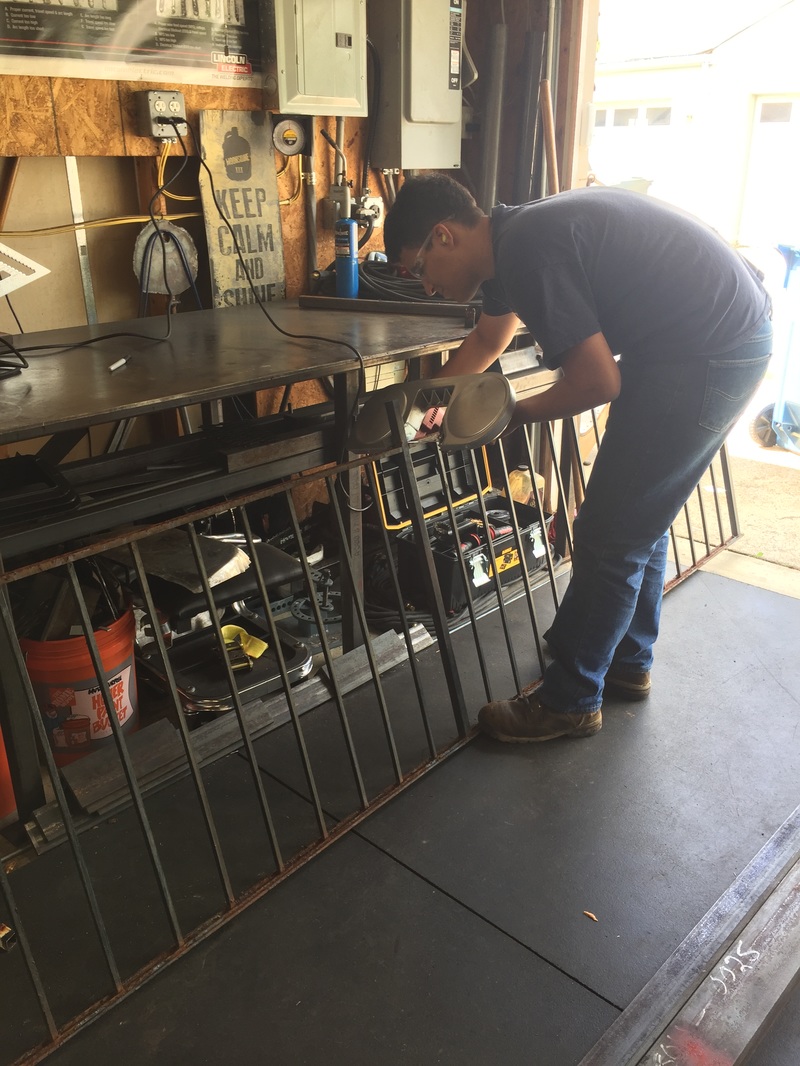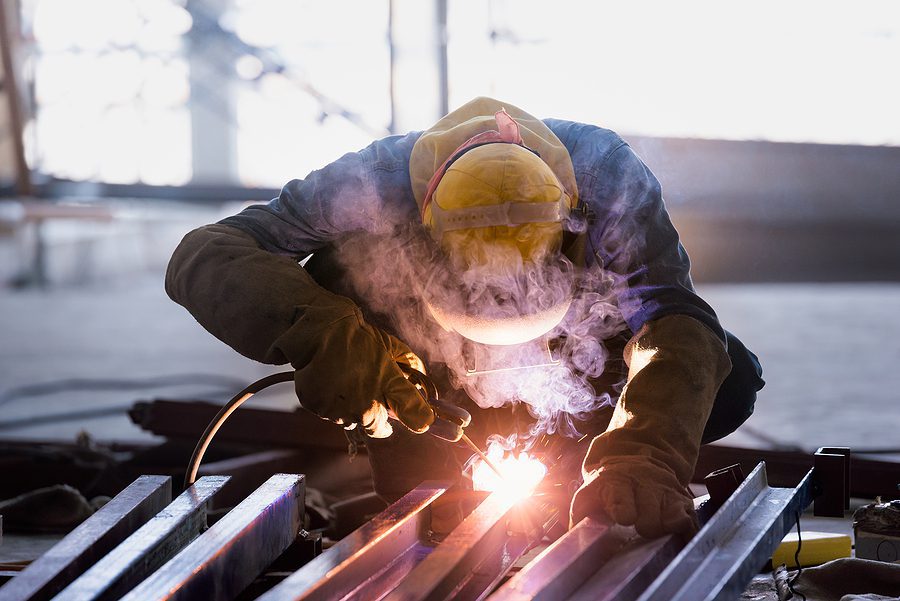Top advice from Belgrade Welding professionals
Wiki Article
Usual Welding Repair Issues and Just How to Address Them Successfully
Welding fixings usually experience a series of concerns that can jeopardize the honesty of the final item. Typical problems consist of inadequate penetration, porosity, and imbalance, to name a few. Each issue provides unique challenges that require specific techniques for resolution. Recognizing these issues is vital for welders aiming to boost their outcomes and abilities. This conversation will discover these usual welding fixing concerns and effective approaches to address them.Insufficient Penetration
Poor infiltration occurs when the weld steel fails to completely fuse with the base product, resulting in weak joints and prospective structural failings. This issue commonly comes from insufficient heat input, inaccurate electrode angle, or inappropriate welding speed. Welders might run into inadequate penetration due to a miscalculation of the needed criteria for a particular product thickness or kind. Furthermore, contamination on the base product's surface can impede effective bonding, worsening the trouble. To address inadequate penetration, welders must assure proper setups on their tools and maintain a tidy work surface. Regular examination of welds is advised to identify any kind of deficiencies early, enabling timely improvements and the prevention of endangered architectural integrity in bonded settings up.Porosity
Porosity is a typical problem in bonded joints that materializes as small gas bubbles caught within the weld metal. This issue can compromise the integrity of the weld, bring about lowered stamina and prospective failure under anxiety. Welding. Porosity usually arises from contamination, dampness, or improper welding techniques, which allow gases to get away into the liquified weld swimming pool. To deal with porosity, welders ought to ensure correct surface area preparation, keep a clean working environment, and utilize suitable welding specifications. Additionally, picking the best filler product and shielding gas can reduce gas entrapment. Regular inspection and testing of welds can assist identify porosity early, guaranteeing timely corrective actions are taken, thereby maintaining the top quality and reliability of the bonded frameworkImbalance
Imbalance in welding can emerge from different variables, consisting of incorrect setup and thermal growth. Recognizing the origin is essential for effective resolution. A number of modification methods are readily available to straighten parts and ensure architectural stability.Root causes of Imbalance
Welding misalignment commonly stems from a variety of underlying concerns that can endanger architectural integrity. One key cause is incorrect fit-up of elements prior to welding, which can result in spaces and irregular surfaces. Variants in thermal expansion throughout the welding process can also lead to distortion, particularly if the products being signed up with have various coefficients of expansion. Additionally, poor securing and fixturing might stop working to hold components safely in position, leading to activity during welding. Improperly maintained devices, consisting of welding equipments and tools, might introduce incongruities in the weld grain, additional contributing to imbalance. Ultimately, operator mistake, stemming from not enough training or experience, can likewise play a considerable function in producing misaligned welds.Correction Methods Offered
Attending to misalignment properly requires a combination of rehabilitative strategies tailored to the certain problems handy. One usual approach is making use of jigs or components to hold parts in the correct placement during welding, making certain regular alignment. Additionally, pre-heating the products can assist lower distortion and enhance fit-up. For considerable misalignment, mechanical realignment techniques, such as using hydraulic jacks or clamps, can be used to fix the position prior to welding. Post-weld warmth therapy might likewise be needed to eliminate stress and anxieties triggered by imbalance. Ultimately, cautious inspection and adjustment during the arrangement stage can protect against imbalance problems from coming to be significant problems, advertising a smoother welding process and improving general architectural integrity.Distortion
Distortion is a typical obstacle in welding that can emerge from various elements, consisting of uneven heating & cooling. Comprehending the reasons of distortion is important for implementing reliable avoidance methods. Addressing this problem not just improves architectural honesty but also boosts the general top quality of the weld.Reasons for Distortion
When subjected to the intense warmth of welding, materials usually go through changes that can lead to distortion. This sensation mainly emerges from thermal development and contraction throughout the welding procedure. As the weld location warms up, the material broadens; upon air conditioning, it contracts, which can produce interior anxieties. Furthermore, unequal home heating across a work surface can exacerbate these tensions, resulting in warping or bending. The sort of product likewise plays a substantial function; steels with varying thermal conductivity and coefficients of growth might respond in different ways, bring about unforeseeable distortions. Furthermore, bad joint layout and poor fixturing can add to imbalance during welding, boosting the likelihood of distortion. Recognizing these reasons is essential for effective welding repair service and avoidance methods.Prevention Techniques
Reliable avoidance strategies for distortion during welding focus on regulating warm input and ensuring correct joint layout. Keeping a constant heat input helps to reduce thermal expansion and tightening, which can lead to distortion. Making use of techniques such as pre-heating the workpiece can also decrease the temperature slope, advertising uniform home heating. Furthermore, selecting suitable joint styles, such as T-joints or home lap joints, can enhance security and reduce anxiety concentrations. Implementing appropriate fixturing to safeguard the workpieces in location further help in keeping alignment throughout the welding process. Ultimately, staggered welding sequences can disperse warmth much more uniformly, protecting against localized distortion. By applying these methods, welders can substantially lower the probability of distortion and improve the general high quality of their welds.Breaking
Fracturing is a typical concern encountered in welding repairs, often resulting from various aspects such as incorrect cooling rates, material selection, or insufficient joint prep work. The incident of splits can substantially compromise the honesty of the weld, resulting in possible failures throughout operation. To resolve this concern, welders have to initially analyze the origin, making certain that materials work and properly picked for the specific application. Additionally, managing the cooling rate throughout the welding process is important; quick cooling can induce stress and anxiety and bring about breaking. Correct joint layout and prep work additionally add to reducing the threat. Executing these approaches can improve weld quality and longevity, eventually decreasing the chance of splitting in completed weldments.
Insufficient Blend
A substantial issue in welding repair services is insufficient fusion, which takes place when the weld metal does not appropriately bond with the base material or previous weld passes - Montana Mobile Welding and Repair Welding. This issue can lead to weak points in the joint, possibly compromising the stability of the welded structure. Variables adding to insufficient fusion include insufficient warmth input, inappropriate welding strategy, and contamination of the surface areas being joined. To address this concern successfully, welders should assure correct pre-weld cleansing and surface prep work, along with change their welding parameters to accomplish appropriate infiltration and blend. Regular assessment during the welding procedure can additionally aid identify insufficient blend early, enabling for prompt corrective measures to improve the overall high quality of the weldOverheating
While welding fixings can improve structural stability, overheating presents a substantial difficulty that can lead to product deterioration. Extreme warmth throughout welding can alter the mechanical residential or commercial properties of steels, causing decreased strength, increased brittleness, and bending. This sensation is particularly essential in high-stress applications where structural integrity is vital. Identifying overheating can entail aesthetic inspections for staining or distortion, in addition to checking temperature level during the welding process. To minimize the threats linked with getting too hot, welders should utilize ideal techniques, such as regulating heat input, adjusting travel rate, and making use of ideal filler products. Additionally, applying pre- and post-weld heat treatments can help recover product residential or commercial properties and enhance the total top quality of the fixing, making sure long-term efficiency and safety and security.Often Asked Inquiries
What Are the Usual Signs of a Welding Flaw?

Exactly How Can I Check My Welds for Top quality?
To test welds for high quality, one can utilize visual evaluations, ultrasonic screening, and radiographic approaches. Each technique ensures structural stability, recognizes problems, and confirms adherence to specified criteria, ultimately improving the dependability of the welded joints.What Safety Safety Measures Should I Take While Welding?
When welding, one must prioritize security by putting on suitable individual safety tools, making sure proper air flow, protecting flammable products away, keeping a clean work space, and knowing surroundings to stop accidents and injuries.Can I Repair a Weld Without Redesigning the Entire Joint?
Fixing a weld without redoing the entire joint is feasible, depending upon the damage (Montana Mobile Welding and Repair Belgrade). Strategies such as grinding, including filler product, or using a welding process can properly resolve certain flaws while preserving the surrounding structureWhat Equipment Are Vital for Efficient Welding Fixes?
Crucial tools for reliable welding repair services consist of a welding machine, cord brush, grinder, protective gear, clamps, and filler materials. Each tool plays a vital role in making sure top quality and safety and security during the repair work process. Porosity commonly occurs from contamination, dampness, welding 101 or inappropriate welding techniques, top article which permit gases to run away into the liquified weld pool. Badly kept tools, including welding makers and devices, may introduce incongruities in the weld bead, additional contributing to imbalance. When subjected to the intense warmth of welding, products often undergo modifications that can lead to distortion. Cracking is an usual concern encountered in welding repairs, often resulting from numerous aspects such as improper cooling prices, material selection, or poor joint preparation. A substantial problem in welding repair work is incomplete blend, which happens when the weld steel does not sufficiently bond with the base material or previous weld passes.Report this wiki page